A charming historic centre that fascinates and captures visitors, where the sound of water follows you everywhere. You may stroll among art and history in a city considered an open-air museum whose monuments and historic sights are a real and surprising testimony to its rich and glorious past.

The Bollente Thermal spring and piazza Bollente - Piazza della Bollente ( map n.° 1)
Between 1870 and 1880, the town council lead by Giuseppe Saracco completely transformed the old area around the thermal spring and destroyed the Jewish Ghetto. The Engineer Ceruti built the Greek style temple (1879) to emphasize the importance of the hot sulphur-bromine-iodine thermal water, which gushes out in piazza Bollente at an amazing temperature of 74,5° C.

Cathedral of Santa Maria Assunta - Piazza Duomo ( map n.° 5)
Construction for the Cathedral began by the Bishop Primo (989-1018) and it was later consecrated in 1067 by San Guido, Bishop and Patron Saint of the city. It has a Latin cross plan divided into one nave with four aisles. From the Romanesque period the apses and beautiful crypt are still visible. The interior was completely refurbished with stuccos and frescos between the 16th and 19th centuries, whilst the bell tower was completed in 1479. The 17thcentury pronao merges in well with the side porticos that line the Cathedral’s square. Noteworthy is the grand portal, a masterpiece by Antonio Pilacorte (1481) and inside the pulpit built at the beginning of the 19th century using reused marble slabs and the baptistery in a rococo style. The left transept houses San Guido’s altar and the altarpiece by the Genoese artist David Corte. In the Chapter House the Triptych of Our Lady of Montserrat, a Masterpiece by the Spanish painter Bartolomeo Bermejo is preserved; this opera was requested by Francesco Della Chiesa a merchant from Acqui T. in 1480 (visiting hours every day, a small offer is requested). On the right hand-side of the Cathedral is the Cloister of the Canons completed in 1495.
The Cathedral is open everyday from 7.30am-12.00 and from 3.00pm-6.00pm.
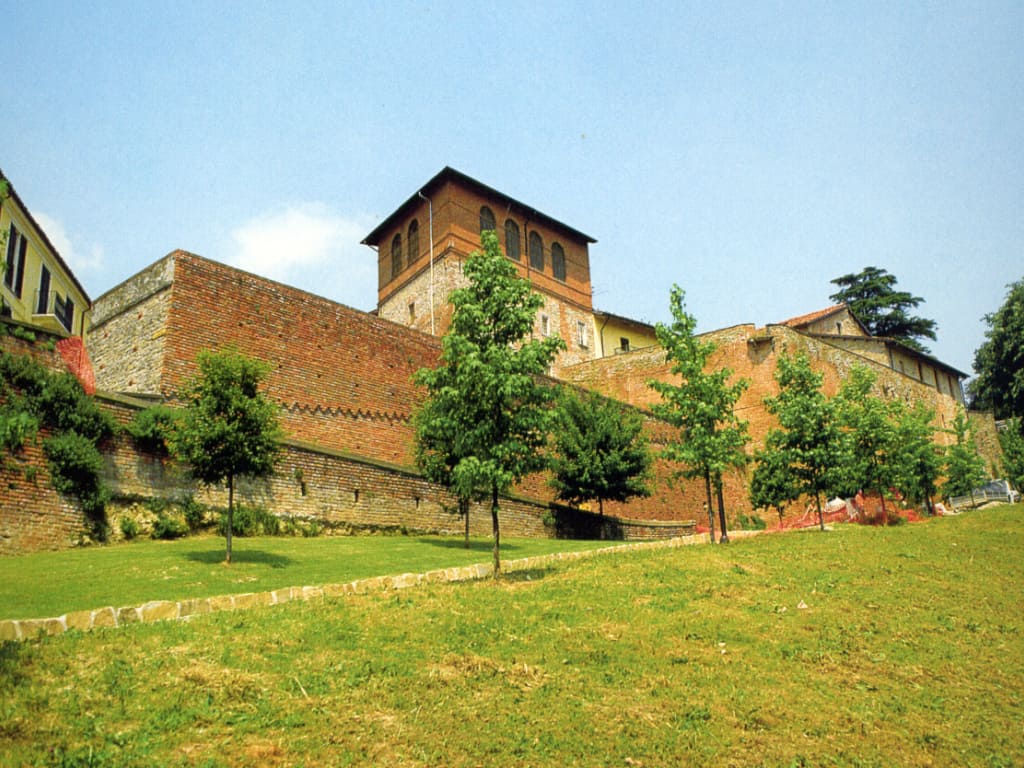
Paleologi Castle –Archaeological Museum & Botanic Garden – via Morelli ( map. n° 2-3 )
Its first record dates back to 1056 as the bishop’s residence, until in 1340 the Marquis of Monferrato took it over. Guglielmo VII Paleologo started rebuilding it between 1480 and 1490, and later the Gonzaga family restructured it during the 17th century employing the Architect Scapitta, and finally in 1789 the architect Ferroggio built the prisons. The castle has remained uninhabited since the times of the Marquises of Monferrato. Today it houses the Archaeological Museum that hosts a rich collection of ruins from the iron age, pre-Roman, Roman and middle ages.
WINTER OPENING TIMES FROM NOVEMBER TO MARCH
From Wednesday to Saturday 9.30-1.30pm and 3.30 to 5.30pm; Sunday 11.00-1.30pm and 3.30-5.30pm
CLOSED ON MONDAYS AND TUESDAYS
OPENING TIMES FROM APRIL TO OCTOBER
From Tuesday to Friday 10.00-1.00pm and 3.00pm - 7.00pm
Saturday and Sunday from 10.00am to 7.00pm
CLOSED ON MONDAYS
For further information please call the Museum tel. 0144 57555 or Town Hall tel. 0144 770272
Sito web: www.acquimusei.it / e-mail: info@acquimusei.it

Church of the Madonna Addolorata - Piazza dell’Addolorata
Built in a Romanesque style with a central nave, two side aisles and an octagonal bell tower leaning against the south apse. It was the abbey church of the former monastery of St. Peter founded by a bishop in the 11th century on the site of a Paleo-Christian cemetery church. At the end of the 14th century it became a Commendam. In 1720 it was rebuilt dividing its central nave and dedicated to the Vergine Addolorata. Having decayed and fallen into disrepair, after World War I it underwent an immense plan of reconstruction and restoration to bring it back to its original look. Noteworthy inside is the 15th century fresco of Lombard School, two 17th century canvases Jesus is crowned with thorns and Jesus before Pilate and the wooden statue of the Madonna Addolorata (Lady of Sorrows) dating from about 1720.
Opening times from Monday to Saturday 7.30am-11.30am; Sundays and bank holidays 8.30-11.30am.
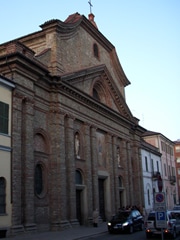
Church of San Francesco Piazza San Francesco - corso Roma
Its façade is in a composite style (1835-1854) and the interior is made up of a nave and two aisles. The bell tower and apse date back to the 15th century. The Franciscan Friars already present in Acqui Terme from 1224, were given the church of San Giovanni, a supposed pre-Christian building which underwent a massive transformation after the second half of the 15th century. Annexed to the church was a convent whose two cloisters are still standing. Inside are some remarkable paintings: the Conception of our Lady by Moncalvo, The Adoration of the Magi by Raffael A. Soleri and Our Lady with Baby Jesus between St. Francesco and Sant’ Antonio of Padova by Pietro Beccaria.
Opening times 8.00am-12.00 and 3.00pm-6.00pm.

Church of Sant’Antonio - via Bella
Built in 1608 by the Barnabites and dedicated to San Paolo, it was joint to the convent and rebuilt in 1701. In 1812 Sant’ Antonio’s brotherhood was transferred here. Noteworthy inside is a beautiful choir and wooden wardrobes in a Piemontese baroque style.
The only possibility of visiting the Church is during Mass on Thursdays at 6.00pm

Church of the Madonna della Neve or della Madonnina - via Madonnina
Construction began in 1727 and was completed in 1766. It has an neo-classical façade and a pleasant rococo style interior with 19th century decorations.
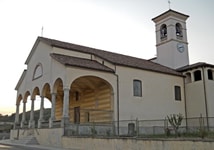
Church of the Madonnalta - Viale Savona
The Church was founded during the 15th century by a group of local poor people. Visits during Mass only.
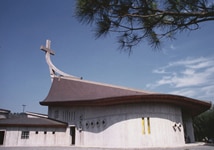
Church of Cristo Redentore – via san Defendente
Consecrated in 1989 and dedicated to Christ the Redeemer.
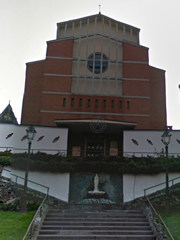
Church of the Madonna Pellegrina – corso Bagni
Built in the 1950s and dedicated to the Madonna Pellegrina.
Church of Santo Spirito della Sacra Famiglia – Via Don Bosco
Built around 1904 and consecrated in 1908. Inside various statues may be admired such as the Sacred Family situated in a niche behind the altar, an image of Don Bosco, the statue of the Virgin Maria Ausiliatrice, the altar of Santa Maria Mazzarello, the founder together with Don Bosco of the daughters of Maria Ausiliatrice, and the statue dedicated to Sant’Antonio.
Opening times: from 8.30am to 12.00 and 3.00pm to 6.00pm.
Church of Nostra Signora della Neve – Lussito Locality
Built in 1771, is has a neoclassical facade and inside a rococo style. The most important opera to be admired is the painting of the “Madonna e il Bambino between S. Carlo Borromeo and San Francesco” attributed to Moncalvo.
It is possible to visit the Church during mass.
Church of Santa Maria - Frazione Moirano
It was rebuilt not long after its construction in 1523. It has three aisles with pilasters, and inside you may admire a painting representing San Guido supporting the Cathedral. Opening times during Mass on Sundays.
BUILDINGS
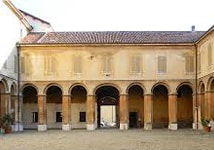
The Bishop’s Seminary - Piazza Duomo
The major Seminary was built between 1755 and 1772 following the plan designed by Bernardo Vittone. Noteworthy is the scissors shaped Staircase and neo-Gothic style chapel built at the end of the 19th century. Next to the Cathedral is the minor Seminary once Santa Caterina’s Monastery (16th century).
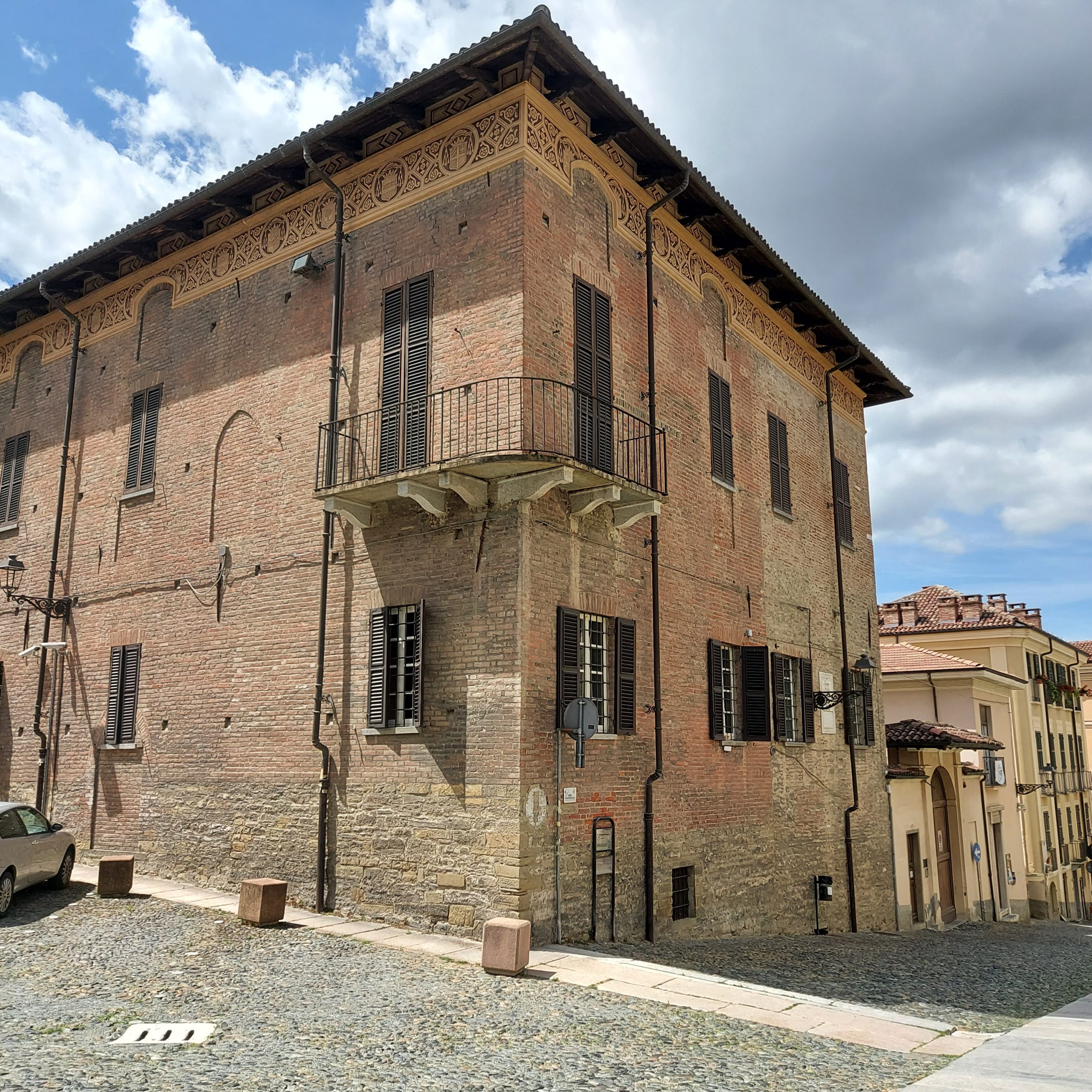
The Bishop's Palace - Piazza Duomo
The foundations of the palace were only built in 1450 and then completed between 1460 and 1476.
The original nucleus, is elevated on three floors above the ground and has an extended “barrel” vaulted cellar, that faces Piazza Duomo.
The portico, was under construction in 1602.
The most ancient work of art, consists of two altar fragments commissioned by the Bishop Bonifacio Sigismondi.
Noteworthy are the fresco decorations of the chapel commissioned in 1750 by the Bishop Marucchi and also the impressive effigy room of the bishops.
In addition in the Palace there are a good number of paintings from the 7th and 8th century, including a small painting attributed to the Cavalier D’Arpino, and also the series of “Apostoli con Cristo” of the guesthouse.
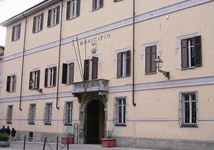
The City Hall – Casa Lupi - Piazza Levi
Built at the end of the 17th century by the Lupi of Moirano family, it then became property of the Jewish man Abraam Levi who donated it to the local council in 1910, hoping that it would become their seat, as it is today. Some rooms have preserved the elegant 18thcentury decorations, as the sala della Giunta which portrays beautiful ornamental panels depicted with Roman scenes. The tower and façade on Corso Roma date from the beginning of the 20th century.
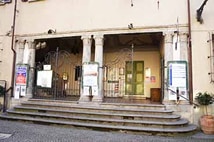
Palazzo Robellini & Regional Enoteca “Terme & Vino” Piazza Levi – ( map n° 7 )
Built by Giovanni Antonio Robellini at the end of the 16th century, as the imposing colonnade testifies, it was later altered in the 18th century by the Dagna Sabina family who added the big staircase and halls.
The Regional Enoteca is housed in the cellars where it is possible to find all wines from the region, but the Enoteca is dedicated especially to the local wine “Brachetto d’Acqui DOCG”.
Open on: Tuesdays, Thursdays, Fridays and Saturdays from 9.30am-1.00pm and 3.30pm-7.00pm;
Sundays 10.00am–1.00pm & 4.00pm–7.00pm.
Closed on Mondays and Wednesdays.

Hotel & Thermae establishment “Nuove Terme” Piazza Italia – (map n° 10 & 14)
Situated in the main square, the spa building and hotel were built in 1870. The Hotel was completely renovated before the Second World War and again between 2001-2002 bringing it back to its old magnificent splendour.

Porta della Bollente – Civic Tower - Piazza della Bollente
The Civic Clock Tower is known as the tower “without foundations” as it rests on the adjacent houses. It was one of the main entrances of the city’s defensive wall system and dates from the year 1.100 beginning 1200. In 1763 it was transformed into a Civic tower, with the extension of the old entrance arch and the addition of the higher part housing the bell-tower.
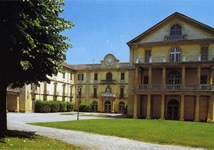
Hotel Antiche Terme piazzale Carlo Alberto – ( map n° 15)
The present spa complex dates from the late sixteen hundreds constructed by Giovanni Battista Scapitta. The reconstruction took place after a landslide had destroyed the original building already documented in the 15th century. After the restoration its look has remained almost unchanged (since 2010 it houses the Spa “Lago delle Sorgenti”, which is currently closed, summer 2024).
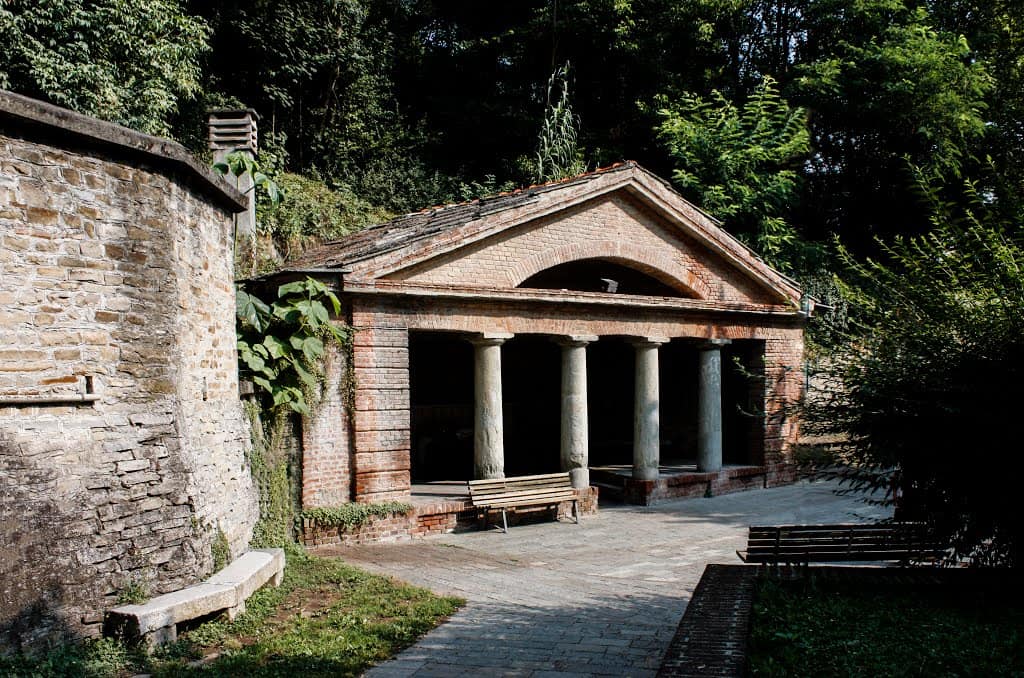
The Acqua Marcia fountain - Zona Bagni o Antiche Terme – (map n° 13)
The neoclassical temple was built in 1847 to highlight the importance of the sulphurous-bromine-iodine thermal spring that gushes out a temperature of 19°C.
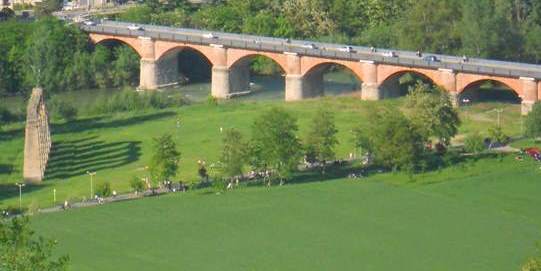
Carlo Alberto Bridge – Bagni area
The construction of the bridge began in 1836 and was completed in 1850, wanted by the King Carlo Alberto.
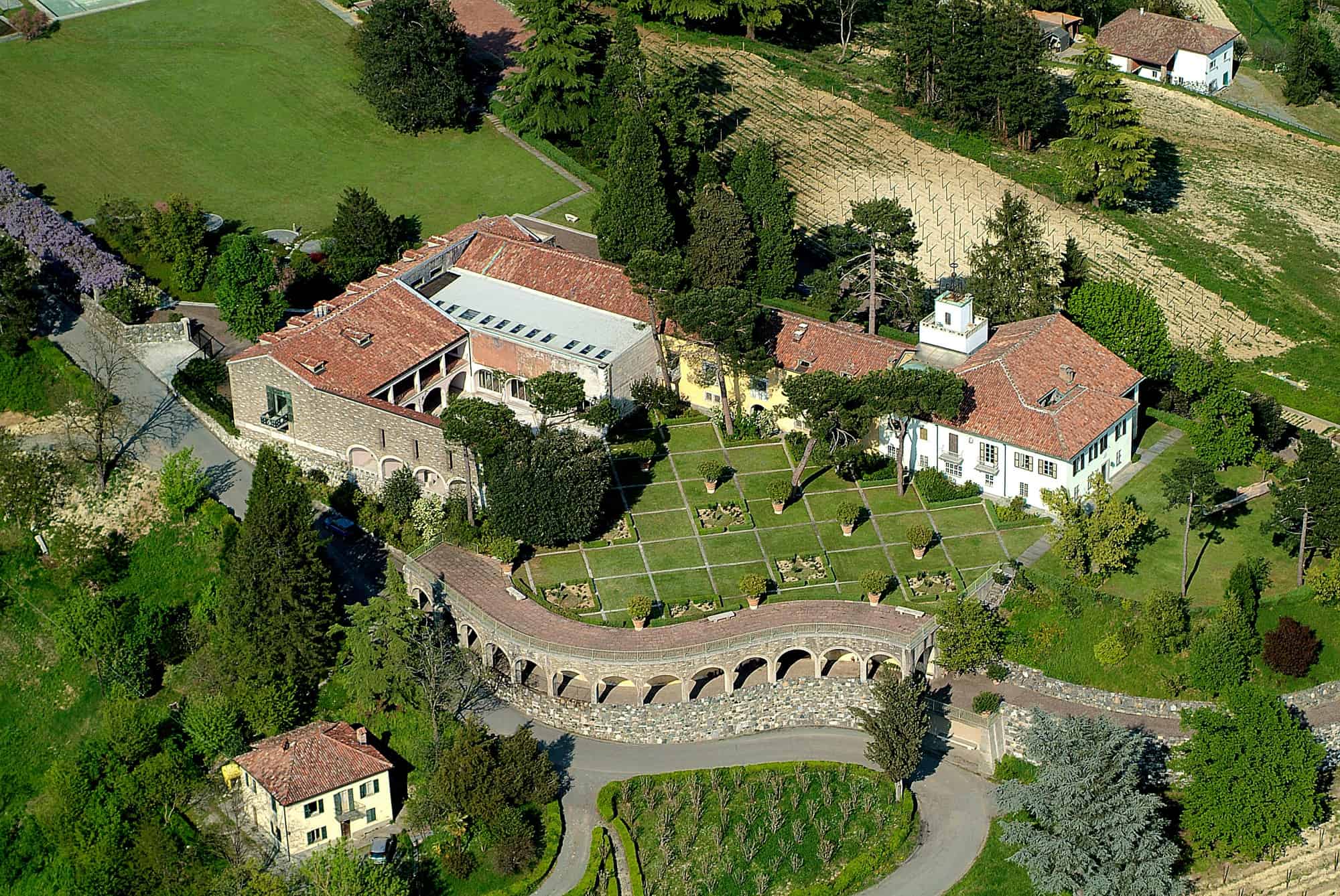
Villa Ottolenghi - Strada Monterosso
Construction for Villa Ottolenghi began by the Counts Ottolenghi - Von Wedekind shortly after the First World War, and was completed in 1953. The planners were Federico D’Amato, Marcello Piacentini and Ernesto Rapisardi. The landscape garden was assigned to Giuseppe Vaccario and Pietro Porcinai (in 2011 it was awarded with the prestigious European Garden award).
The decoration of the interiors was carried out by Ferruccio Ferrazzi, who also painted the cartoons for the mausoleum mosaics.
For visits and information please call 0144 322177.
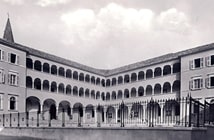
“Jona Ottolenghi’ old people’s Home - Via Verdi
Housed in the 16th century hospital of which three orders of loggias are still visible. Thanks to Count Arturo Ottolenghi and his wife Herta, the building was refurbished in 1934 entrusting the work to the Architect Marcello Piacentini. The decorations are work of the artists Ferruccio Ferrazzi and Fiore Martelli. In the garden the famous bronze statue of the “Prodigal Son” may be admired, opera by Arturo Martini (for visits please ring the bell).
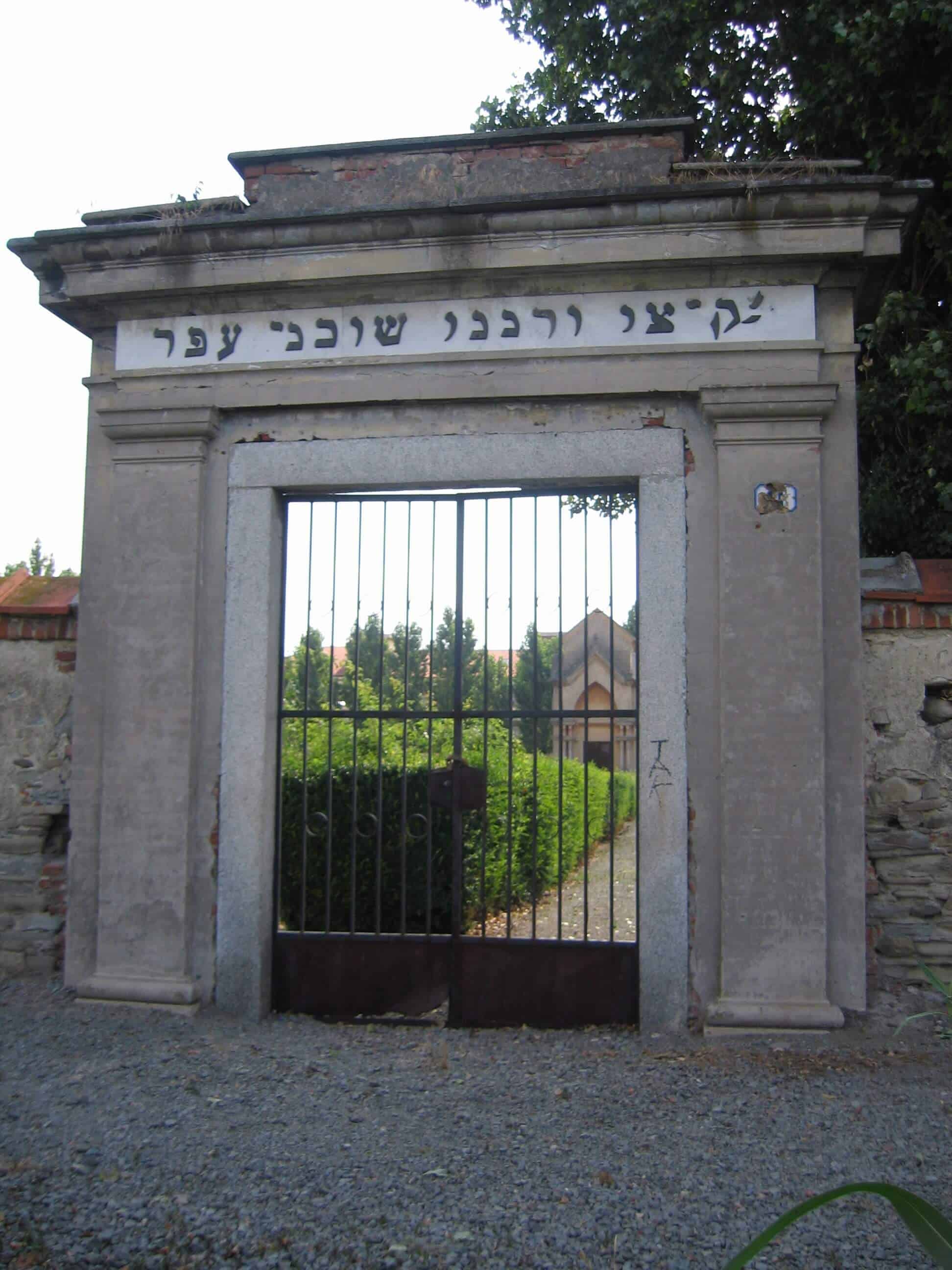
Jewish Cemetery- Via Salvadori
The cemetery was established in 1836, the Beth Haim or House of Life, where in an area of 3.664 square metres three generations and entire families of Acquesi Jewish faith have been buried. From 1837 till 2005 there have been 830 single burials, of which 340 can be identified by the tombstone, arranged in chronological death order. This site is a must: a stone archive that represents centuries of local community history.
Questo contenuto è disponibile in:


